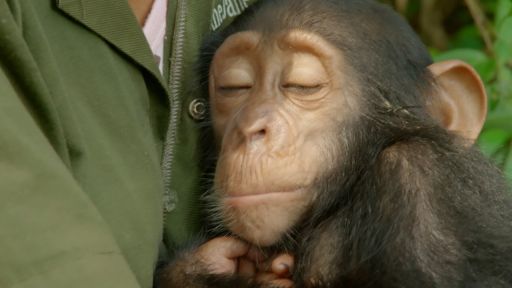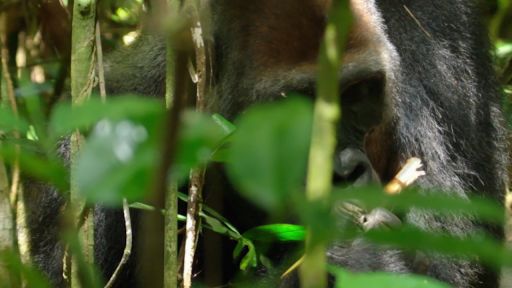Despite the number of years living and working as a wildlife cameraman in Europe, Vianet D’jenguet always carried fond childhood memories of the Congo wherever he traveled. In his job, D’jenguet filmed in many locations across Africa, but never in his homeland. My Congo represents his first opportunity to film in his native country and to be in front of the camera as he takes viewers to his favorite places to witness the diversity of wildlife, stunning landscapes, and friendly people.
In this first-person account, D’jenguet visits sites that evoke happy family memories, tours a famous chimpanzee sanctuary, films a variety of animals and birds in vast national parks, and makes his way through a remote jungle in search of his roots.
More than 20 years after his physician father, a malaria specialist, moved the family to Paris to treat students and diplomats, D’jenguet begins his homecoming in the capital city of Brazzaville where he was born. He emphasizes that there are two Congos in Africa: the Democratic Republic of Congo and D’jenguet’s smaller Republic of Congo. The two nations are separated by the Congo River, the second largest in the world. As he tours the city’s bustling markets, the sights and sounds remind him of his childhood with venders selling fresh fish from that river as well as a variety of fruits and vegetables.
My Congo next ventures into the countryside where the wildlife cameraman shows viewers many of his favorite spots. He starts on the coast at Point Noire where his family often spent vacations and then travels to Tchimpounga, the largest chimpanzee sanctuary in Africa. D’jenguet is moved when he’s introduced to young orphaned chimps being rehabilitated after being victims of poachers and the pet trade. Set up by the Jane Goodall Institute nearly 25 years ago, the sanctuary also engages with the next generation to promote animal conservation.
Heading north, D’jenguet heads out in early morning to film all kinds of birds, such as huge Palm Nut vultures, swallows, kingfishers, manakins, and Pin-tailed whydah birds which resemble little peacocks. He mentions there are more than 600 species of birds alone in his homeland. But once he reaches Odzala National Park, it is clear which animal is his favorite: the forest elephant, which rarely grows taller than eight feet, but has big tusks. It is only found in the Congo basin and its growing population is protected, at least in the Republic of Congo.
An eight-hour hike through the wild equatorial rainforest of D’jenguet’s ancestors holds an unexpected surprise for the native son when he meets up with some of the last, indigenous Forest People. He discovers a deeper family connection to his homeland – that D’jenguet’s great-grandfather Sokondi still is deeply revered by the tribe as their protector. He shows how they use traditional techniques to get everything they need from the forest.
Continuing through the rainforest with camera and tripod in tow, D’jenguet heads by river to what he describes as “the best place to see wildlife in the whole of Africa.” It is a clearing called Mbeli Bai in Nouabale-Ndoki National Park where there are endless sightings of forest elephants, Western Lowland gorillas, forest buffalo, and sitatungas or swamp antelopes. It’s here that D’jenguet ends his journey having learned more about himself, his country, and why he became a wildlife cameraman in the first place.








